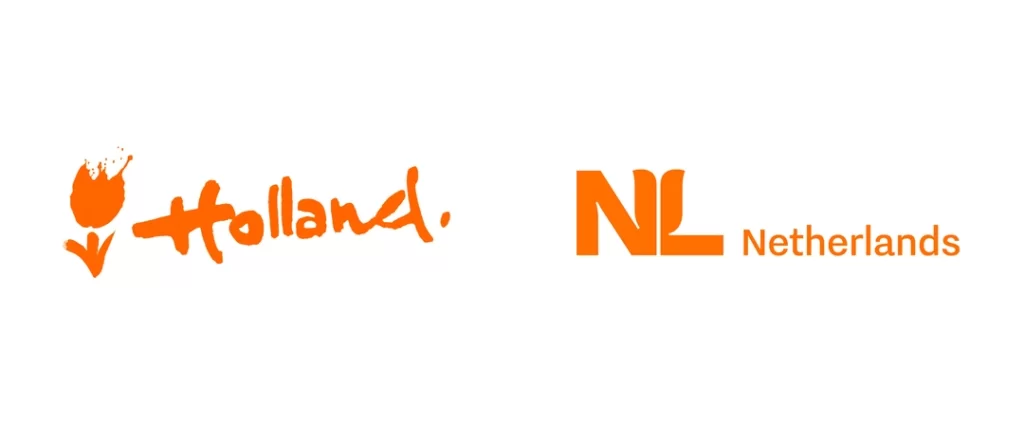Nation Branding: Building Identity and Influence on the Global Stage
In the modern world of instant communication and global interconnectedness, nations face both opportunities and challenges when defining and shaping their image and reputation on the international stage. Much like corporations utilise branding to differentiate themselves, countries increasingly focus on developing and promoting their national brands to boost investment, tourism, talent attraction, and overall competitiveness.
The strategic crafting of a nation's brand has emerged as a high-stakes exercise with far-reaching implications. A compelling brand can confer valuable advantages, from strengthening citizen pride and unity to attracting desired resources and partnerships. However, nation branding also poses risks, as branding efforts deemed inauthentic or manipulative may backfire. Additionally, there are ethical questions about a nation purposely curating its image for economic or political ends.
This article will explore the complex and multifaceted phenomenon of nation branding in today's world. It will examine how governments, businesses, and other entities work to shape and promote brand identities for nations in the global marketplace. The strategies, tools, and approaches will be analysed, from tourism slogans to public diplomacy campaigns. Challenges around balancing brand authenticity, national values, and external perceptions will be discussed.
Additionally, this post will delve into the impacts of nation branding across different facets of society, politics, and economics. From spurring international investments to influencing public opinion during disputes, national brands wield soft power in many spheres. The risks of oversimplification and loss of control will also be weighed. Overall, the dynamics, stakeholders, and rising significance of nation branding in our interconnected age will be illuminated.
Table of Contents
Understanding Nation Branding

Nation branding is a complex and multifaceted process through which countries actively manage and shape their international image and reputation. Nation branding aims to cultivate a unique and appealing national identity that resonates domestically and globally. Just as companies invest in branding and marketing to create positive perceptions around their products and services, countries similarly work to develop brands that highlight their most compelling attributes, values, accomplishments, and aspirations.
An influential nation branding strategy involves careful coordination across various domains, including public diplomacy, economic policy, trade, tourism promotion, cultural dissemination, and more. The goal is to align these initiatives to broadcast a cohesive and memorable brand identity to international audiences. This may involve emphasising historical achievements, showcasing natural or cultural treasures, promoting business and investment opportunities, or underscoring commitments to excellence in specific industries, technology, sports, or other fields.
Skilled nation branding also requires understanding target audiences and tailoring messaging and image cultivation accordingly. What resonates with investors may differ from what inspires tourists or immigrants. Thus, adept nation branding strategies will identify key audiences and develop customised communications and branding touchpoints to appeal to each segment.
Impactful nation branding also necessitates consistency and coordination between government activities, communications, and messaging. Just as a company ensures its advertising aligns with its corporate values and product attributes, nations must also ensure that policy initiatives and communications reinforce rather than undermine the desired brand identity. This involves a long-term outlook and commitment from government and private sector stakeholders.
Done well, strategic nation branding can deliver substantial dividends internationally, including increased tourism, foreign direct investment, skilled immigration, international education opportunities, improved trade relationships, and enhanced diplomatic cooperation. However, poorly executed attempts at nation branding can backfire and create confusion or unfavourable perceptions if not rooted in authenticity and coordination at all levels. Thus, nation branding represents a complex but potentially transformative opportunity for countries seeking to make their mark in an increasingly interconnected world.
The Elements of Effective Nation Branding

Crafting a compelling national brand requires a multifaceted approach highlighting a country's unique identity, strengths, values and aspirations. Effective nation branding shapes perceptions and conveys an authentic, emotionally resonant narrative to domestic and international audiences.
Cultural Heritage and Values
A nation's distinct cultural traditions, heritage sites, arts, cuisine, music and more provide a rich foundation for branding efforts. Iconic elements that capture the essence of a country's history and character help craft a distinctive identity. For instance, Japan's brand often emphasises the tea ceremony, Buddhism, martial arts, and technological innovation. Authenticity is critical – branding should tap into what makes a nation unique.
Economic Dynamism and Innovation
Messaging that showcases a country's economic vitality, resources, infrastructure, and business-friendly policies can attract investment and talent. Singapore's branding highlights its status as a global finance and tech hub. South Korea emphasises its cutting-edge innovations, manufacturing power, and tech giants. And emerging economies like India focus on rapid growth and opportunities. But branding must be backed by genuine strengths.
Natural Beauty and Tourism Appeal
Stunning natural landscapes, vibrant cities, architectural marvels, and more can draw visitors worldwide. New Zealand makes its glaciers, mountains and Middle Earth vistas central in tourism promotions. Mexico leverages its beaches, ruins and culinary heritage. Conservation efforts to preserve natural assets may also be part of branding.
Quality of Life and Well-Being
Touting healthcare systems, community spirit, education hubs, and happiness resonates with those seeking a better life. This is key for nations like Canada and the Nordic countries that build brands around a high quality of life. But brands need authenticity. So, progress in sustainability, equality, and social welfare should align with branding.
Good Governance and Stability
Peaceful politics, strong institutions, lack of corruption and robust diplomacy generally improve national brands. Countries can highlight democratic values, transparency, cooperation with other nations and commitments to human rights. Switzerland's stability aids its safe-haven branding. Brands suffer when nations are associated with instability.
The most effective nation branding weaves together these dimensions in a compelling narrative. Consistency across communications and delivering on brand promises are also vital. With thoughtful branding, countries can boost tourism, economic growth and global reputation.
Strategies for Nation Branding Success

Successful nation branding relies on several key strategies:
1 – Consistent Messaging and Storytelling
To build a strong national brand, countries must develop consistent messaging and an overarching narrative that resonates with target audiences. Rather than sporadic campaigns, influential nation branding requires a unified storytelling strategy across communications channels.
For example, Japan's “Cool Japan” campaign aims to capitalise on the country's pop culture exports and technology innovations by promoting a coherent brand centred around Japanese creativity, style, and innovation. Aligning branding efforts under the Cool Japan banner creates synergies for travel, trade, academia, and public diplomacy.
Other countries such as “Incredible India” and “Malaysia Truly Asia” have also succeeded by aligning branding with a central theme that spotlights the nation's unique attributes and offerings. Consistent messaging creates clarity amongst diverse audiences.
2 – Engaging Digital Presence
In today's interconnected world, nations must prioritise digital branding strategies. An engaging online presence and social media footprint enable countries to reach and influence global audiences directly.
Destinations like Greece and Peru have transformed their global appeal through visually stunning travel campaigns on platforms like Instagram and YouTube. Similarly, Estonia's “Digital Nation” branding highlights its leadership in digital governance and e-residency. Social media provides low-cost opportunities for nations to control their narratives.
Beyond social media, national tourism and investment websites also provide critical touchpoints for national branding. User-friendly official portals that inspire and inform audiences can significantly boost interest in visiting and investing in a country.
- Hardcover Book
- Eggeling, Kristin Anabel (Author)
- English (Publication Language)
- 268 Pages – 05/20/2020 (Publication Date) – Routledge (Publisher)
3 – Cultural Diplomacy and Soft Power
Cultural exports and exchanges provide highly effective mechanisms for nation branding by fostering greater understanding between countries. Initiatives like China's Confucius Institutes and the British Council employ “soft power” to share their countries' rich cultural assets and values.
Partnerships between arts organisations, sports teams, universities, and celebrities offer low-risk, high-impact approaches for countries to enhance their global reputation and appeal. For example, K-pop bands and films have dramatically increased South Korea's popularity and familiarity.
Cultural diplomacy builds trust and goodwill over the long term. With growing global connectivity, a nation's brand increasingly depends on how others view it as a collaborative partner and global citizen.

4 – Public-Private Partnerships
Given limited government resources, public-private collaborations can amplify the reach of national branding campaigns. Co-branding campaigns that unite tourism boards and airlines can entice visitors. Partnerships with multinational firms may convince them to invest in or manufacture products within the country.
Iceland's innovative country branding strategy partners with brands like HBO and United Airlines. Its 2017 “Game of Thrones” promotion with HBO generated billions of media impressions. Strategic co-branding lends credibility and expands the audience.
Influencers on social media also offer credible storytelling channels. Working with musicians, celebrities, and thought-leaders as brand ambassadors humanises a nation's image. These mutually beneficial partnerships tap wider networks.
5 – Sustainable Development and Social Responsibility
Lastly, showcasing commitment to global challenges positions countries as responsible members of the international community. Environmental sustainability, human rights, economic inclusion, and human development priorities demonstrate national values and progress.
Efforts like Sweden's sustainability initiatives and New Zealand's progressive social policies convey social responsibility. Countries can boost their reputation by leading on climate action, diversity, education, health, and human rights.
Citizen diplomacy programs that facilitate cultural exchange also build cross-cultural understanding and dialogue. Countries can advance domestic and international interests by strategically communicating national contributions to global issues.
An integrated nation branding approach requires consistent storytelling, digital innovation, cultural diplomacy, public-private partnerships, and social responsibility. With coordinated efforts across these areas, countries can achieve greater awareness, trust, and influence worldwide.
Challenges in Nation Branding

Balancing Perception and Reality
A significant challenge is aligning external perceptions with domestic realities. Countries must balance aspirational branding with credible messaging that reflects actual conditions. Misrepresenting strengths or downplaying weaknesses can backfire if discovered. Branding efforts must authentically bridge the gap between how a nation sees itself and others. This requires meticulous research and cultural nuance.
Representing Diverse National Identities
Nations are comprised of diverse subcultures, demographics, and identities. Capturing this complexity in branding campaigns can take time and effort. Strategies perceived as glossing over internal diversity or promoting narrow stereotypes face public criticism. Marketers must undertake inclusive processes that respectfully represent marginalised groups. Campaigns seen as exploitative or appropriative of minority cultures prompt allegations of prejudice. Nuanced branding is critical.
Navigating Shifting Political Landscapes
Countries undergo frequent leadership changes, policy reforms, and demographic shifts. Sudden political developments can rapidly reshape public opinion. Branding must remain adaptable. Campaigns aligned with one administration may conflict with their successor's agenda. Close collaboration with public sector counterparts can help coordinate appropriate responses.
- Dinnie, Keith (Author)
- English (Publication Language)
- 268 Pages – 04/12/2022 (Publication Date) – Routledge (Publisher)
Differentiation in a Competitive World
Many nations compete for trade, talent, tourism, and influence. Standing out requires clear differentiation. Weak branding risks blending into the background. Marketers must identify and amplify unique strengths to create distinct national brands. This differentiation becomes more problematic as more countries pursue nation branding. Novel positioning and creatively harnessing local attributes are essential.
Influential nation branding must carefully balance aspirational messaging and credible representation. Strategists must understand nuanced national identities, adapt to political changes, and create differentiated brands that stand out globally. Managing these multifaceted challenges requires strategic insight and cultural awareness.
Impacts and Significance of Nation Branding

Economic Growth and Foreign Direct Investment
A positive national brand and reputation can attract substantial foreign direct investment (FDI) into a country, stimulating economic growth and development. When a nation is perceived as a stable, business-friendly environment with significant economic potential, international companies and investors are likelier to establish operations, manufacturing facilities, and other commercial ventures there. This injection of foreign capital and activity creates new jobs, transfers skills and technology, boosts production capabilities, and integrates the country deeper into global value chains and markets.
Tourism Revenues
An appealing and unique brand personality allows a country to attract more tourists, benefiting businesses in the hospitality, transportation, retail, food and beverage, and entertainment sectors. By promoting distinctive attractions, cultures, landscapes, and experiences, strategic nation branding helps stimulate demand and makes the country a more attractive travel destination. Tourism revenues flow into the broader economy, supporting infrastructure development and jobs.
Diplomacy and International Relations
A positive nation brand facilitates diplomacy and strengthens international relationships. Countries with solid and favourable images find forming strategic partnerships and alliances easier. They can leverage their reputation and influence to advance their interests. Nation branding fosters greater awareness and familiarity with the country's culture among foreign publics. This “soft power” can translate to deeper bilateral ties, more effective negotiations and agreements, and greater international cooperation.
Human Capital Attraction
An appealing brand image helps attract foreign talent, skilled professionals, entrepreneurs, students, researchers, and investors looking to relocate. By projecting itself as an exciting place to study, work or live, a country gains human capital, enriching its workforce. This inflow of foreign skills, creativity, and knowledge, or “brain gain”, bolsters innovation and activates progress across various sectors. The country also benefits from the global networks that these talented immigrants facilitate.
In summary, influential nation branding provides significant and multifaceted benefits. It stimulates growth and investment, increases tourism, strengthens diplomatic relationships, and attracts talent and human capital. Nation branding enables countries to communicate their key strengths and values efficiently. This shapes how others view and engage with them.
Conclusion: Crafting the Future Through Nation Branding
- Aronczyk, Melissa (Author)
- English (Publication Language)
- 256 Pages – 09/17/2013 (Publication Date) – Oxford University Press (Publisher)
Nation branding is a complex process requiring thoughtful strategy and coordinated effort. At its core, it is about crafting and projecting a compelling national identity and reputation. Done well, nation branding can reap significant dividends by boosting tourism, exports, foreign investment, talent attraction, and international influence. However, it is not simply a matter of sloganeering or flashy marketing campaigns. Authenticity and substantive policy reform must underpin any effective nation-branding initiative.
The nation branding process necessitates bringing state and non-state actors together to highlight a nation's strengths and downplay its weaknesses. This involves identifying the nation's unique value proposition – its distinguishing assets and attributes. These could include natural wonders, cultural heritage, innovation capacity, good governance, or a shared spirit of progress and unity. The brand must be consistently communicated through numerous channels – from tourism advertising to diplomatic corps to national airlines.
Nation branding is always a work in progress, requiring constant re-evaluation and adaptation. Shifts in public sentiment, leadership, or socioeconomic conditions may necessitate brand repositioning. Wise nation branding strategies recognise that global perceptions are fluid and complex. Simplistic portrayals often fall flat or ring hollow. Nuance, authenticity, and multifaceted storytelling are critical.
In our rapidly globalising world, nation branding will only grow in significance. It has the power to attract people, investment, and influence. It can also build cultural bridges and positively reshape international relationships. However, nation branding must be grounded in tangible policies and actions that live up to the presented identity. Otherwise, it loses credibility. Skillful nation branding is a boon; unsubstantiated hype is a bane. As more countries embrace conscious branding, the most compelling national stories will be those that ring true.
Last update on 2024-05-04 / Affiliate links / Images from Amazon Product Advertising API



